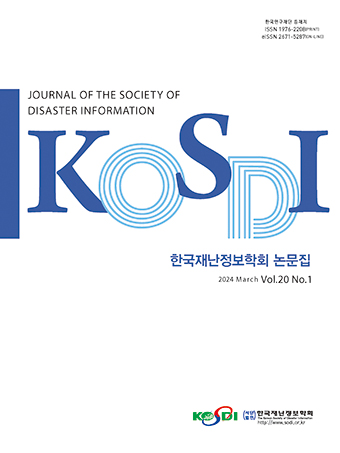Research Article
Abstract
References
Information
Purpose: Currently, many chemicals are used in industrial and real life, and many substances are used in the form of a single substance, but most of them are used in the form of a mixture, and there is a need for a criterion for judging the danger of these substances. Method: Therefore, this study aims to confirm the risk criteria of the mixture through experimental studies on flammable mixtures in order to secure the effectiveness of the details of the existing Dangerous Goods Safety Management Act angerous Goods Judgment Criteria and to ensure the reliability and reproducibility of the dangerous goods judgment. Result: Experimental results show that alcohol flash point is mixed with water, which is a non-flammable liquid. Similar flash point trends occurred around 60% on an alcohol basis. In addition, in the case of flammable-combustible mixtures, there was little change in flash point if the flash point difference of the two materials was not large, and if the flash point difference of the two materials was low, the flash point tended to increase with the increase of the high flash point material. Conclusion: In the future, the test results may provide reference data on the experimental criteria for the flammable liquids that are cracked at the fire site.
연구목적: 현재 많은 화학물질들이 산업 및 실생활에서 사용하고 있고, 단일 물질의 상태로 사용하는 물질도 많으나, 대부분 혼합물의 형태로 사용되고 있고, 이러한 물질들의 위험성을 판단하는 기준이 필요한 실정이다. 연구방법: 따라서 본 연구에서는 기존의 “위험물안전관리법 위험물 판정 기준”에 대한 세부내용의 실효성확보 및 위험물 판정의 신뢰성 및 재현성 확보를 목적으로 인화성 혼합물에 대한 실험적연구를 통해서 혼합물에 대한 위험성 판단기준을 확인하고자 하였다. 연구결과: 실험결과를 살펴보면 먼저 알코올류 인화점의 경우 비가연성 액체인 물과 혼합되었을 때. 알콜 기준으로 60%를 전후로 비슷한 인화점 추이를 나타내었고, 또한 가연성-가연성 혼합물의 경우에 있어서는 두 물질의 인화점차이가 크지 않으면 인화점의 변화가 거의 없었고, 두 물질의 인화점차이가 낮으면 인화점이 높은 물질의 증가에 따라 인화점이 증가하는 경향을 보였다. 연구결과: 향후 본 실험결과는 소방현장에서 단속되는 인화성 액체 대한 실험적 판정 기준에 대한 참고적인 자료를 제공할 수 있을 것이다.
- ASTM D 6450 (2005). Standard Test Method for Flash Point by Continuously Closed Cup (CCCFP) Tester, ASTM international.
- Fire Department (2018). Enforcement Decree of the Dangerous Goods Safety Management Act and the Dangerous Goods Safety Act.
- Globally Harmonized System (2018). Classification of flammable liquids,UNECE.
- Ha, D.M., Lee, S.K. Kim,. M.M. (1993). "Estimation of Flash Point of Pure Flammable Liquid", The Korean Society of Safety, Vol. 8, No. 2, pp. 8-17.
- Korea Fire Industry Technology Institute (2008). Dangerous Goods Classification Guide Book.
- Korea Ministry of Foof and Drug Safety (2018). Notification, KFDA.
- KS M ISO 2592 (2007). Test Method for Flash Point and Burning Point - Cleveland Open Cup Test Method, KATS.
- KS M ISO 3679 (2003). Paints, varnishes, petroleum and related products-flash point test methods-rapid equilibrium method, KATS.
- KS M ISO 3680 (2008). Paint, varnish, petroleum and other related products-flash point / non-flash point test method-rapid equilibrium method, KATS.
- Lide, D.R. (1995). Handbook of Chemistry and Physics 77th edition CRC, Press.
- OSHA (2017). Material Safety Data Sheet, Occupational Safety & Health Administration.
- STM D 1120 (2007). Standard Test Method for Boiling Point of Engine Coolants, ASTM international.
- 1990 ASTM D 1310 (2005). Standard Test Method for Flash Point and Fire of Liquids by Tag Open-Cup Apparatus. ASTM international.
- Publisher :The Korean Society of Disaster Information
- Publisher(Ko) :한국재난정보학회
- Journal Title :Journal of the Society of Disaster Information
- Journal Title(Ko) :한국재난정보학회논문집
- Volume : 15
- No :4
- Pages :634-647
- DOI :https://doi.org/10.15683/kosdi.2019.12.31.634




 Journal of the Society of Disaster Information
Journal of the Society of Disaster Information







